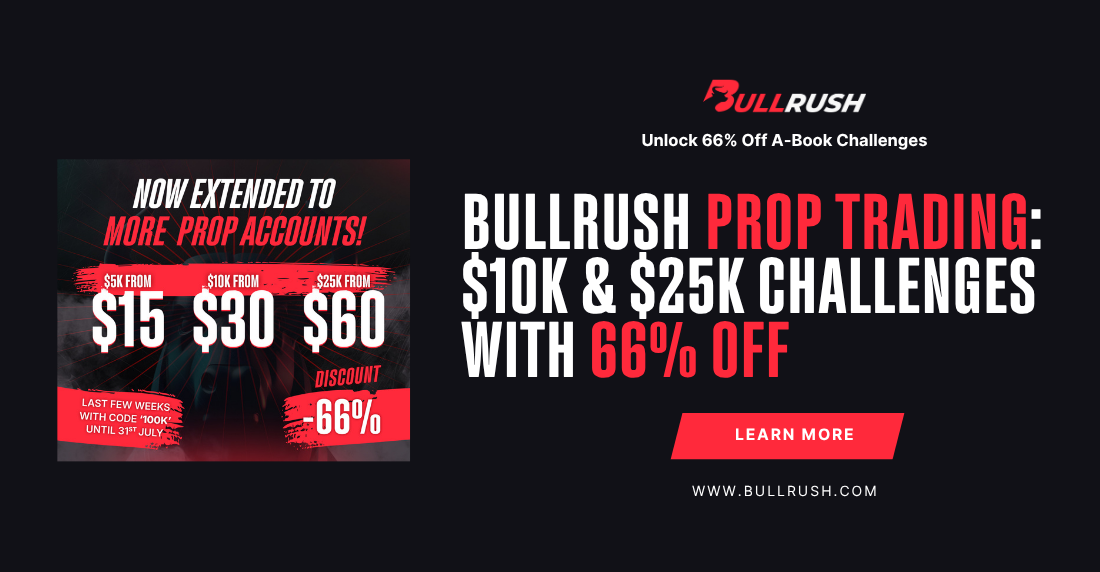
Forex Trading: When Not to Trade Forex
You’ve got the charts open. The candles are moving. Your fingers are itching to click “buy” or “sell.” But here’s the truth nobody tells you when you start trading:
The best trades often come from knowing when NOT to trade forex.
At BullRush, we see it all the time. New traders are so focused on finding the next entry, chasing every breakout, jumping into every signal. But the ones who consistently rise on our leaderboards? They know how to wait. They know how to survive. They treat patience like a strategy, because it is.
In this article, we’re flipping the script. Instead of asking, “When should I enter?”, we’re asking:
When is it smarter to stay out?
1. When Liquidity Dries Up
Imagine walking into a store where nobody’s working. No buyers, no sellers, just silence. That’s what the forex trading market feels like during low-liquidity periods… the hours when major trading sessions are closed, and volume disappears.
One of the worst times to trade forex is between 5 PM and 7 PM EST, also known as the “dead zone” between the New York close and the Tokyo open. During this time, price action becomes sluggish, spreads widen, and your trades become more vulnerable to manipulation by low-volume players.
But it’s not just about the movement; it’s about the quality of movement. Low liquidity doesn’t give you clean trends. It gives you noise; the kind that eats away at your account.
✅ Don’t Trade Forex When:
- You’re trading during the dead zone between sessions.
- You notice spreads increasing without significant price moves.
- Candles form with long wicks and little direction, aka “stop hunt territory.”
2. Right Before (or During) High-Impact News
A trader sets up the perfect breakout trade. He’s got his confirmation, his Forex signals agree, and he feels confident. But then… BOOM! The U.S. Non-Farm Payroll report drops. Within seconds, the market explodes 100 pips up and down before settling… right where it started.
He’s out of the trade. His stop-loss got skipped in the chaos.
News volatility isn’t a trader’s best friend. It’s a wrecking ball, especially when you haven’t prepared for it. Spreads widen, execution delays, and slippage becomes your worst nightmare. Sometimes, even a good plan can’t protect you from how unpredictable markets become during major news releases.
✅ Don’t Trade Forex When:
- A red-folder event is approaching within 30 minutes.
- You don’t fully understand what the news means for the currency pair.
- You feel rushed to “get in before the move.”
3. When You’re Not in the Right Mental State
Let’s talk about the part of trading no one sees: your mental state.
You just took two back-to-back losses. You’re angry, frustrated, maybe even embarrassed. Your gut tells you to get it back, so you dive in without sparing a thought. One oversized position later, and your account is bleeding.
This is not trading; it’s an emotional reaction, and it’s the culprit of most blown accounts.
Whether it’s revenge trading, overconfidence after a big win, or fatigue from watching charts for hours, keep in mind that mental health stands behind your every decision. Smart traders know their limits and when not to trade forex. And what do they do? They walk away.
✅ Don’t Trade Forex When:
- You feel pressure to recover a loss.
- You’re trading to prove something, not to follow strategies.
- You’re exhausted or impatient and looking for a “quick win.”
4. When You Feel Overexposed
You think you’re diversifying. One trade on EUR/USD, one on GBP/USD, maybe even another on AUD/USD. But guess what? You’re actually just making multiple picks on the same thing. The strength or weakness of the U.S. dollar.
When all your open positions are correlated, you’re not spreading risk; you’re stacking it. One unexpected USD move, and all your trades go against you at once.
Proper risk management isn’t just about lot size. It’s about understanding correlation and limiting your exposure across currency pairs.
✅ Don’t Trade Forex When:
- Multiple trades depend on the same currency’s direction.
- You haven’t calculated total risk across all open positions.
- You’re not prepared to take multiple losses if one currency moves.
5. When the Market is Directionless
Some days, the market just isn’t playing ball.
You’ll open the charts and see price bouncing in a narrow range: no trend, no volume, no volatility. One minute it’s up 10 pips, the next it’s down 12. Your indicators show mixed signals. You feel tempted to enter… just to stay active.
This is the trap of low-quality setups.
Every time you enter a trade without conviction, you wear down your psychology. And death by a thousand small losses is just as painful as one big loss.
✅ Don’t Trade Forex When:
- Price is chopping sideways without a breakout.
- You can’t explain your trade setup clearly.
- You’re entering out of boredom, not conviction.
6. Before the Weekend or Market Close
The week is almost over. You’re up a few percent and thinking, “Why not squeeze in one more trade?” You click buy. The market closes. Over the weekend, geopolitical news hits, and by Monday, the market opens with a 60-pip gap… against your position.
And, at that moment, you didn’t just lose the trade. You lost control.
Make no mistakes, weekend gaps are real, and they’re unpredictable. Holding trades over the weekend means accepting the risk of market shocks when liquidity is off and brokers can’t execute orders.
✅ Don’t Trade Forex When:
- It’s late Friday, and you can’t monitor trades through the weekend.
- You don’t have a long-term plan for holding the position.
- A major news event could hit while markets are closed.
7. On Major Holidays and Bank Closures
Think of the market during a major holiday, like Christmas or a national bank holiday, as a ghost town. There might be a few participants, but volume is thin, and price tends to drift aimlessly.
Without institutional players to usher price, market action becomes unpredictable and less trustworthy. Some brokers also increase spreads during these periods to protect themselves.
Trading during holidays isn’t just risky, it’s mostly unproductive.
✅ Don’t Trade Forex When:
- It’s a major holiday (Christmas, New Year’s, U.S. Independence Day).
- You see low volume and erratic price movement.
- Most major global markets are closed.
8. When You Have No Plan
This one is simple. If you’re looking at a chart and don’t know your entry, stop-loss, and take-profit levels… why are you even in the market?
Trading without a plan or a forex trading strategy is like driving blindfolded. You might not crash immediately, but it’s only a matter of time.
Professional traders don’t take chances on hunches. They act with intention. That means every trade has a setup, a reason, and a clear risk-reward profile.
✅ Don’t Trade Forex When:
- You’re unsure of where to place your stop.
- You’re trading on gut feeling instead of a tested system.
- You can’t define your edge in the trade.
Mastering the Sit-Out
There’s no trophy for trading every chart pattern you see. Smart traders know: capital preservation is a position, too. The most powerful decision you can make isn’t always to enter the trade… sometimes, it’s to sit it out and wait for the A+ setup.
If you’re still learning when not to trade forex, remember this: inactivity is not weakness, it’s wisdom in disguise.
At BullRush, we reward precision, patience, and performance. Not impulse.
That’s why our trading competitions and trading challenges are built to push your skills, test your timing, and sharpen your edge in real market conditions. If you can stay cool under pressure and only strike when the odds are in your favor… You belong on the leaderboard.
Ready to prove that sitting tight can still be a winning move?
Skip the noise. Join the rush. Trade smart, with BullRush.



